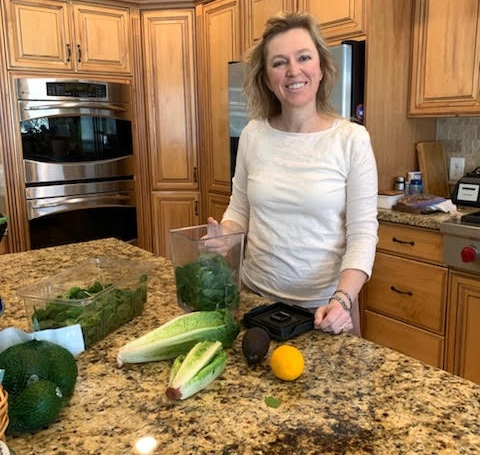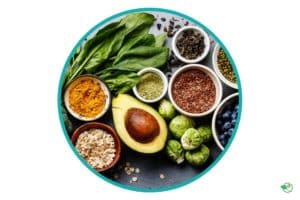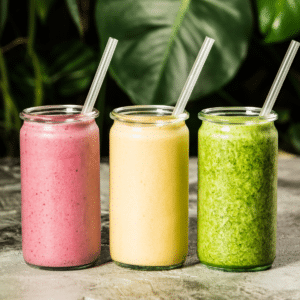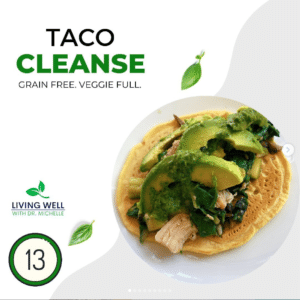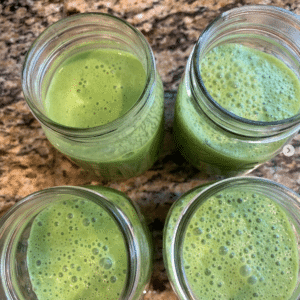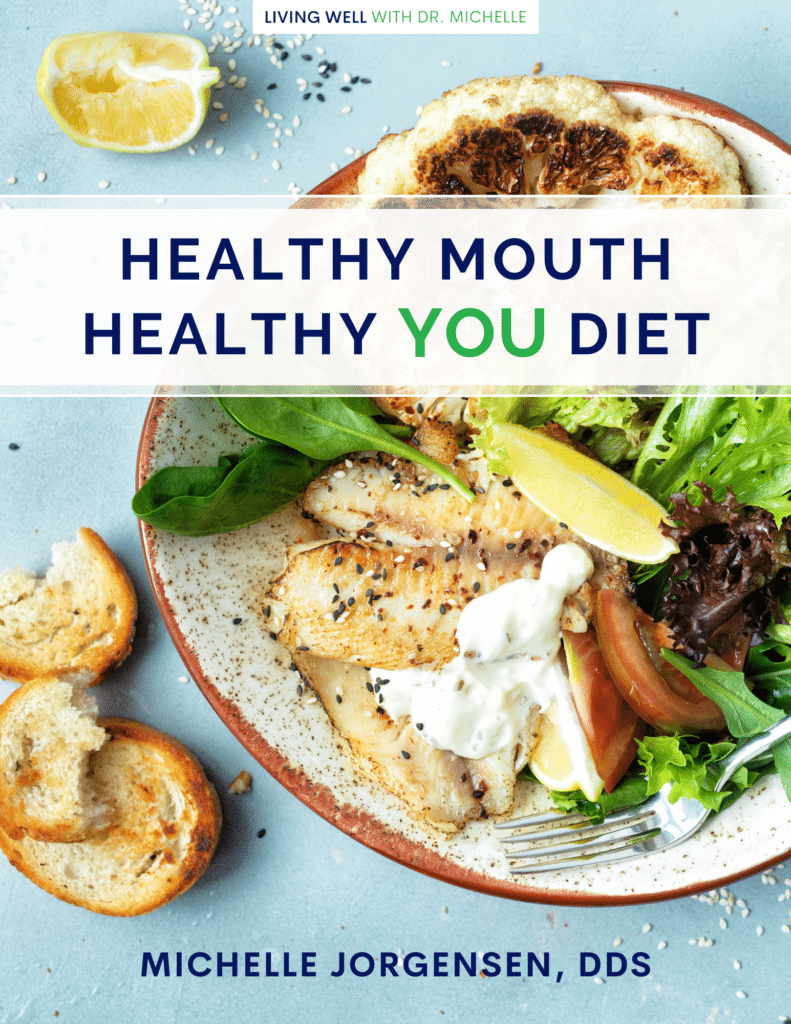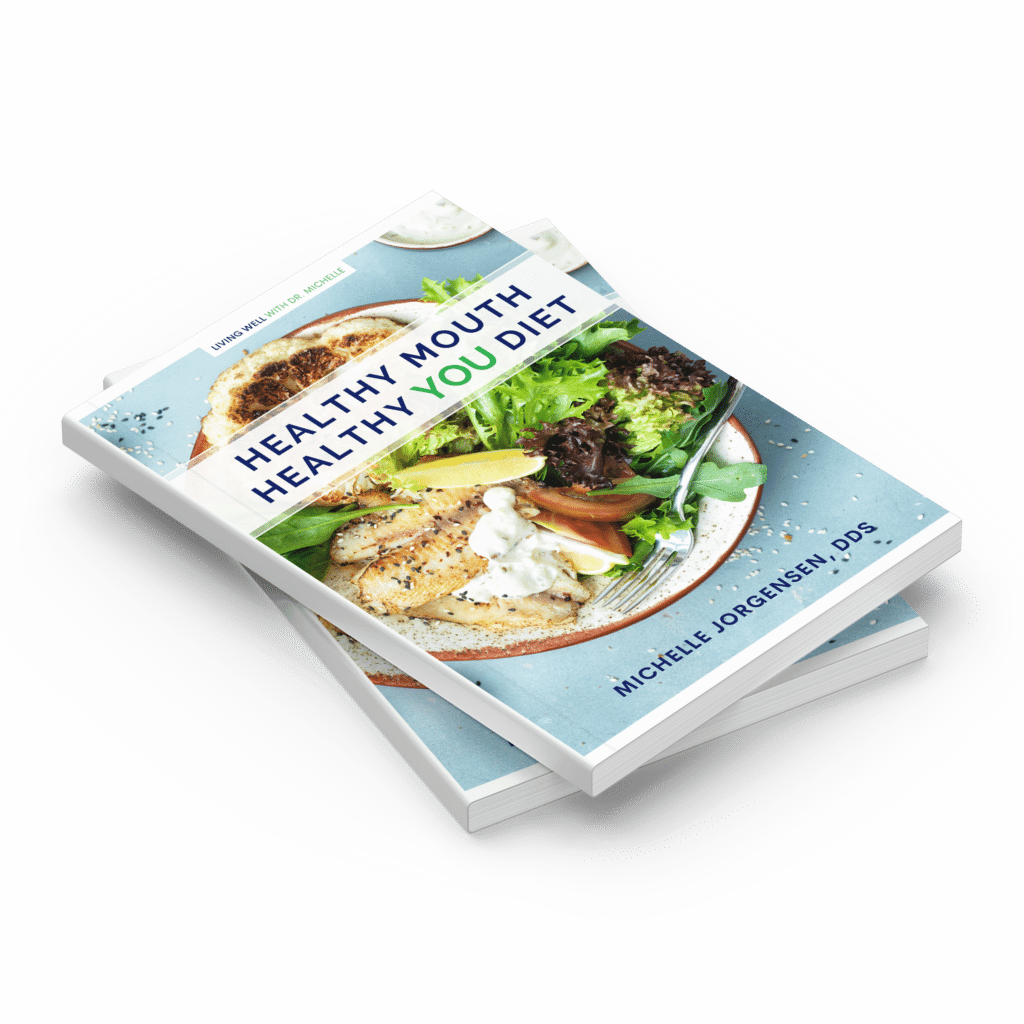Health Info » Healthy Recipes and Nutrition Info » Homemade Korean Kimchi
Homemade Korean Kimchi
- Jump to Recipe
- Dr. Michelle Jorgensen
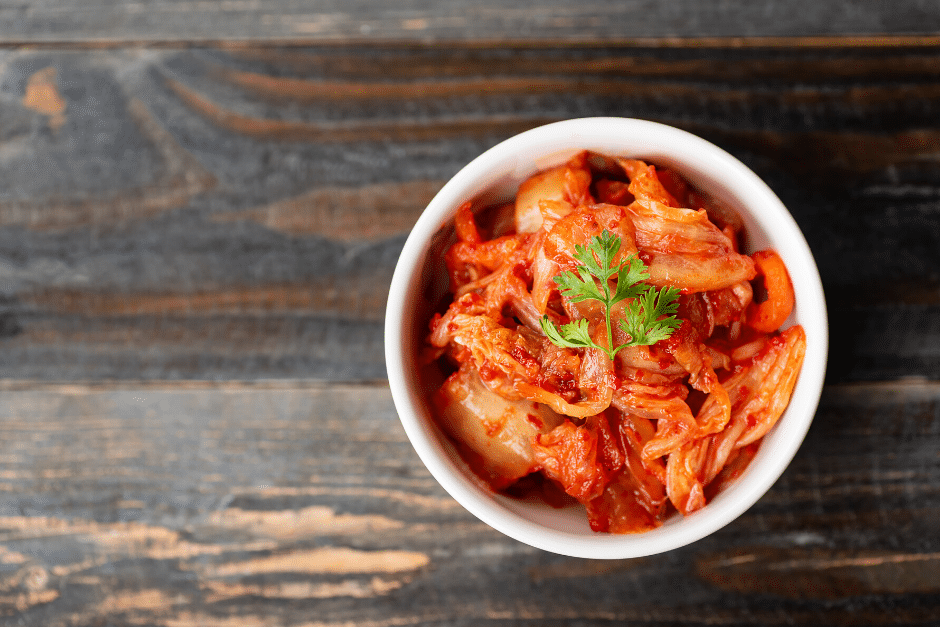
Let me tell you about my homemade Korean Kimchi…
The Secret Of Kimchi
Everything Asian seems to be a little mysterious.
Their language stumps our ears and our eyes, and the food brings new tastes to our tongue.
In my travels to Asia, I was incredibly intimidated by the sights, sounds and smells of the bustling open markets. I couldn’t recognize a lot of the produce and other items I was seeing, and the signs, written in the native language, were no help!
I remember walking by large slabs of bacon hanging from vendor stalls on the street in Taiwan. The pollution, flies and car exhaust were working to cure the meat! I like our US conditions and food sanitation, but I don’t like American food.
My daughter and I were laughing that American Food is “plastic” cheese, burgers and fried chicken.
What a great food culture!
My family and I always choose Asian food if we’re given a choice.
Korean food is one of my favorites. I just love the “sides” that come with every meal – bean sprouts, picked cucumbers and radishes, roasted sweet potatoes and the ever present kimchi.
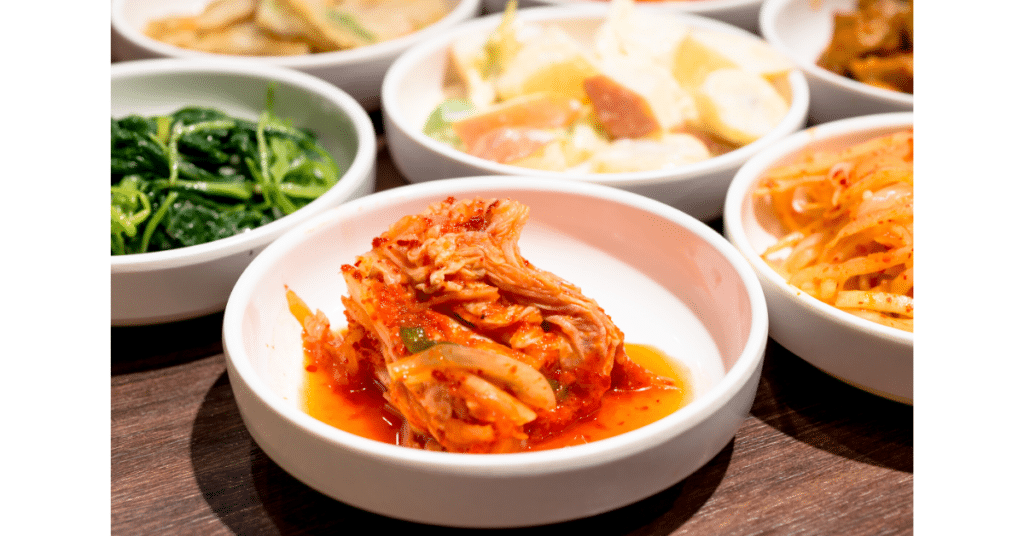
Now if you’re never had kimchi, the smell alone might have you turning up your nose. Our modern culture isn’t accustomed to the smell of fermented foods.
However, that kimchi may just be the secret to gut health you’ve been searching for!
The History of Kimchi
History shows that kimchi dates back to 37 BC. During those times, it was common to create fermented foods because they didn’t have refrigeration and it was a good way to preserve a harvest.
It ended up being served at every meal or even eaten by itself as a snack.
In fact, Koreans today eat an average of 48 pounds of Kimchi per year, usually having it with every meal!
How Is It Made?
Kimchi is made from Napa cabbage. The cabbage is first soaked in salt water to kill off any harmful bacteria and to pull the water from the cabbage so it stays preserved longer.
The good bacteria that remain, called lactobacillus, are the beneficial bacteria found in yoghurt and in a healthy gut.
They convert the sugars and carbohydrates in the cabbage and other vegetables into lactic acid, which preserves the vegetables and gives kimchi its signature tangy flavor.
Many neighborhoods get together to make kimchi in massive batches.
It’s easy and cheap to do. It’s simply mixing some ingredients together and letting them sit for a long time to ferment.
Check out the kimchi I am currently making!
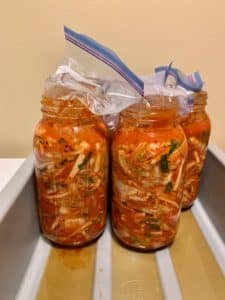
Why it’s so Healthy
Kimchi is considered one of the healthiest dishes in the world.
It is packed with vitamins and minerals, especially Vitamins A and B, and calcium and iron, along with the gut-healthy bacteria.
In eating only one serving of kimchi a day, you will immediately have over 50% of the daily recommended intake of vitamin C and carotene.
The combination of these nutrients have been shown to help lower cholesterol and fight disease…even cancer.
Kimchi also helps mental health, digestion, and fights obesity.
Have you ever noticed Koreans have beautiful skin? Kimchi has plenty of antioxidants and anti-aging properties which may be the secret to their beauty!
So how do you get used to the taste??
If you are new to kimchi, you might not love it out of the gate. However, many people say that once you get used to the taste, you will be addicted!
So just try it a little at a time, and soon maybe you’ll be a kimchi addict!
Now do I have you wanting to make Kimchi?? I hope so!
It’s easy and cheap and addicting and HEALTHY!
You can buy delicious kimchi in Asian grocery stores, even in the produce section of most supermarkets, but it’s especially fun to make it yourself.
My Homemade Korean Kimchi
Homemade Korean Kimchi
Ingredients
- 1 Large Napa Cabbage cored and cut into 1-inch pieces
- 1/4 Cup Sea Salt
- 2 Cups Korean Daikon Radishes cut into matchstick strips (optional, or use carrots)
- 1 Bunch Scallions trimmed and cut into 1-inch pieces
- 1 Tbsp Fresh Ginger sliced (2-3 disks, peels are ok)
- 6 Cloves Garlic, whole
- 1 Red Onion, Quartered
- 2-6 Tbsp Korean-style red pepper flakes not powder, I use the brand gochugaru. See notes to buy it now.
- 2 Tbsp Fish Sauce more to taste
- 2 tsp Sugar
Instructions
Prepare the Cabbage:
- Take 1-inch pieces of napa cabbage and place in a large bowl (see notes). Add salt and toss until salt is evenly distributed. Add enough cool water to cover the cabbage and stir until salt is dissolved. Be sure the cabbage remains submerged in the brine by placing a weighted plate over the cabbage (see note).
- Allow the cabbage to soak in the brine at room temperature for 6-8 hours or overnight.
- Once the cabbage has finished soaking, drain the cabbage and lightly rinse the cabbage. Drain, squeeze out any excess water and place it back in the bowl. Mix in the Korean daikon radish and scallions to the cabbage and stir until combined.
Make the Paste:
- Place the ginger, garlic, red onion, red pepper flakes, fish sauce, and sugar in your food processor. Process until well combined, pulsing, until it becomes a thick paste. Taste the paste and add more Korean-style red pepper flakes until you reach your desired spice level.
Massage in the paste with the cabbage:
- First off, you will want to use gloves for this (See note). Scoop the paste onto the cabbage and (using gloves!), mix and massage the vegetables and paste together really well, until all the vegetables are well coated.
Prepare for fermentation:
- Take your cabbage mixture and pack it into a large, two-quart jars by continually pushing the cabbage until the jar is filled to about 2 inches below the rim. Pack cabbage into the jar until about 1-2 inches worth of brine/paste mixture pools on top of the cabbage.
- To ensure the cabbage stays submerged in the brine/paste mixture, cover it with a quart-sized Ziploc freezer bag filled ⅓ of the way full of cool water. Be sure that the plastic bag filled with water fully covers the kimchi and the inside of the jar so that no air can get to it. Anything that touches air may mold.
Ferment:
- Place the jar in a container to collect any juices that may escape while fermenting. Leave the jar in a cool place or on the counter for 3 days. Press down on the kimchi mixture daily with the back of a wooden spoon to keep it submerged. Be sure the plastic bag continues to fill the whole top of the jar.
- Between the third and fifth day of the jar sitting out, check for signs of fermentation action or bubbles. Tap the jar and see if tiny bubbles rise to the top. Watch to see if any of the juices have started spilling overflowing - these are signs of fermentation. Once you see bubbles, it is ready to store in the refrigerator where it will continue to ferment and develop more flavor. If, after a few days you still aren’t seeing signs of fermentation, be patient, it may just need more time.
- For a stronger, tangier flavor you can ferment on the counter longer before placing into the refrigerator.
Refrigerate:
- Once you have seen evidence of fermentation, the kimchi is ready to be moved to the refrigerator. Begin by removing the plastic bag from the container and capping the jar with a plastic lid (see note). Place in the fridge and allow to ferment in the fridge for two weeks in order to achieve its full flavor and complexity. The longer you ferment, the more complex and sour the taste will become.
- After two weeks in the refrigerator, it is ready to eat. You can also store it in the fridge for months on end (as long as it remains submerged in the brine) and it will continue to ferment very slowly, getting more and more flavorful. After each use, feel free press kimchi down under the brine.
- Enjoy your homemade Korean Kimchi!
Notes
Enjoy!
Living Well with Dr. Michelle
Related Posts:

Unlocking Relief: Your Guide to Managing Jaw Pain and TMJ Treatment
Unlock relief from TMJ pain with our comprehensive guide to effective TMJ treatment. Learn about causes, symptoms, and non-invasive solutions
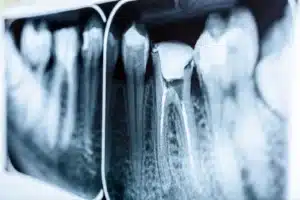
You Can Heal Your Teeth! – Simple Tips for Reversing Tooth Decay
You can heal teeth. It’s not voodoo, it’s simple anatomy and chemistry. I’ll happily spend my days teaching more of you how to stay healthy!

Connecting Oral Health and Gut Health for Optimal Wellness
Dr. Michelle Jorgensen Facebook Twitter LinkedIn Email Topics Holistic Health and Wellness Resources Digestive Health Guide Related Products HCL Digest Did you realize that your
WELCOME!
I’m Dr. Michelle Jorgensen, I love eating food, and I live to share healthy recipes with YOU! I am not going to give you any recipes that don’t taste amazing and make your body feel great!


